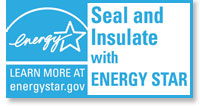 Super Therm® is truly a timely, Energy Star and environmentally-safe coating that addresses both insulation and fire protection with minimal effort in application labor, making it ideal for a wider market use. The uses for Super Therm® are numerous and only limited by one’s imagination.
Super Therm® is truly a timely, Energy Star and environmentally-safe coating that addresses both insulation and fire protection with minimal effort in application labor, making it ideal for a wider market use. The uses for Super Therm® are numerous and only limited by one’s imagination.
Air conditioning is costing Australia more than $1.3 billion over the summer months, according to new research. Buildings consume 39% of all energy in the economy.
Did you know a 6° reduction in the thermostat produces a 39% reduction in utility costs. Con Edison
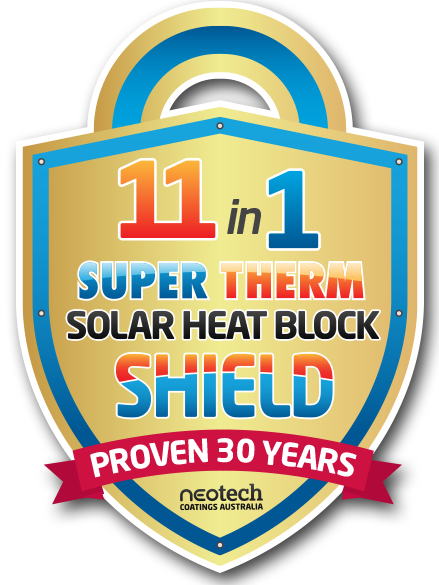 Super Therm® has proven itself by the thousands of successful worldwide applications since 1989. In today’s environmentally focused climate Super Therm® insulation ceramic coating has proven to be the only truly sustainable and successful solution extensively tested!
Super Therm® has proven itself by the thousands of successful worldwide applications since 1989. In today’s environmentally focused climate Super Therm® insulation ceramic coating has proven to be the only truly sustainable and successful solution extensively tested!
With the rising cost of energy being one of the biggest concerns for businesses today, traditional insulation such as fibreglass or rock wool which work on a resistance factor to slow the penetration of heat. The downside is that they retain heat and over time loose insulation value when moisture is present. Super Therm® reflects 95% of the heat and it doesn’t lose any value when moisture is present or it’s dirty.
The big initiative towards reducing the demands on energy consumption and fossil fuels means that Super Therm® demands a reduction on energy consumption as well as pollution from the energy generation and global warming. Australia is pushing towards Zero
By using the advanced technologies of NEOtech Coatings and Super Therm® to cover your roof or walls means that business cover much more of their costs. The coating will provide insulation, corrosion control, toxic material encapsulation and chemically resistant coatings for many applications.
The EPA (Environmental Protection Agency – USA) has recognised the environmental benefits of Super Therm® for reducing energy consumption and resulting pollution from energy consumption.
Insulate oil and gas storage tanks to prevent heat build-up and evaporation. In the US, the EPA has found that 25% of our air pollution is generated from gas fume emission. Also, the present epoxy coatings being used to coat these tanks will only last approximately 4-5 years before cracking and peeling; the labor cost and precautions involved are expensive.
There’s 3 types of ways heat or energy can be lost.
In most cases 50-100% of energy loss or transfer is through the roof, ceiling and walls. Environmentally friendly, Super Therm® blocks 95% of heat loss therefore saving money and creating sustainable solutions with less power consumption.
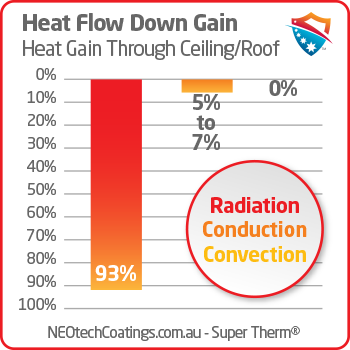 Radiation is a method of heat transfer that does not rely upon any contact between the heat source and the heated object. For example, we feel heat from the sun even though we are not touching it. Heat can be transmitted though empty space by thermal radiation. Thermal radiation (often called infra red radiation) is a type electromagnetic radiation (or light). Radiation is a form of energy transport consisting of electromagnetic waves. No mass is exchanged and no medium is required, therefore we can lose much of our energy through ineffective ways of managing heat loss through radiation.
Radiation is a method of heat transfer that does not rely upon any contact between the heat source and the heated object. For example, we feel heat from the sun even though we are not touching it. Heat can be transmitted though empty space by thermal radiation. Thermal radiation (often called infra red radiation) is a type electromagnetic radiation (or light). Radiation is a form of energy transport consisting of electromagnetic waves. No mass is exchanged and no medium is required, therefore we can lose much of our energy through ineffective ways of managing heat loss through radiation.
Super Therm® with its 99BTU is able to reflect heat back to its source which either prevents heat penetration which is great for air conditioners or traps heat for internal heating. Both methods save money and reduce environmental impact from heat load and power consumption.
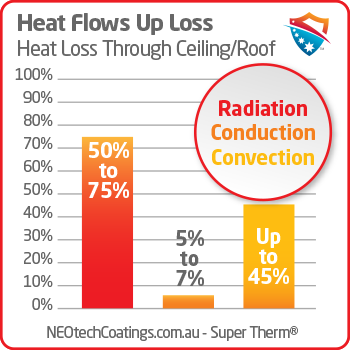 Both conduction and convection require matter to transfer heat. Conduction occurs when two object at different temperatures are in contact with each other. Heat flows from the warmer to the cooler object until they are both at the same temperature. Therefore heat moves from the outside to the inside on a hot day…and in reverse if heating is on inside.
Both conduction and convection require matter to transfer heat. Conduction occurs when two object at different temperatures are in contact with each other. Heat flows from the warmer to the cooler object until they are both at the same temperature. Therefore heat moves from the outside to the inside on a hot day…and in reverse if heating is on inside.
Conduction is the movement of heat through a substance by the collision of molecules. At the place where the two object touch, the faster-moving molecules of the warmer object collide with the slower moving molecules of the cooler object. As they collide, the faster molecules give up some of their energy to the slower molecules. The slower molecules gain more thermal energy and collide with other molecules in the cooler object. This process continues until heat energy from the warmer object spreads throughout the cooler object.
Some substances conduct heat more easily than others. Solids are better conductor than liquids and liquids are better conductor than gases. Metals are very good conductors of heat, while air is very poor conductor of heat. You experience heat transfer by conduction whenever you touch something that is hotter or colder than your skin e.g. when you wash your hands in warm or cold water.
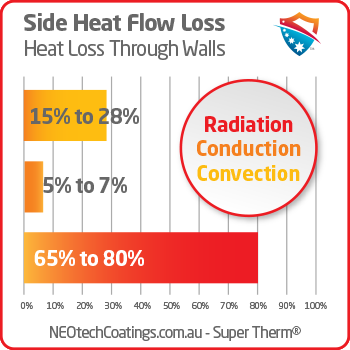 In liquids and gases, convection is usually the most efficient way to transfer heat. Convection occurs when warmer areas of a liquid or gas rise to cooler areas in the liquid or gas. As this happens, cooler liquid or gas takes the place of the warmer areas which have risen higher. This cycle results in a continuous circulation pattern and heat is transfered to cooler areas. You see convection when you boil water in a pan. The bubbles of water that rise are the hotter parts of the water rising to the cooler area of water at the top of the pan. You have probably heard the expression “Hot air rises and cool air falls to take its place” – this is a description of convection in our atmosphere. Heat energy is transfered by the circulation of the air.
In liquids and gases, convection is usually the most efficient way to transfer heat. Convection occurs when warmer areas of a liquid or gas rise to cooler areas in the liquid or gas. As this happens, cooler liquid or gas takes the place of the warmer areas which have risen higher. This cycle results in a continuous circulation pattern and heat is transfered to cooler areas. You see convection when you boil water in a pan. The bubbles of water that rise are the hotter parts of the water rising to the cooler area of water at the top of the pan. You have probably heard the expression “Hot air rises and cool air falls to take its place” – this is a description of convection in our atmosphere. Heat energy is transfered by the circulation of the air.
Super Therm®, unique properties, especially its ability to keep surfaces cool even in extreme temperatures, enabled the coating to pass muster in the California “COOL ROOF” engineering research program with the highest marks.
Results from the COOL ROOF program:
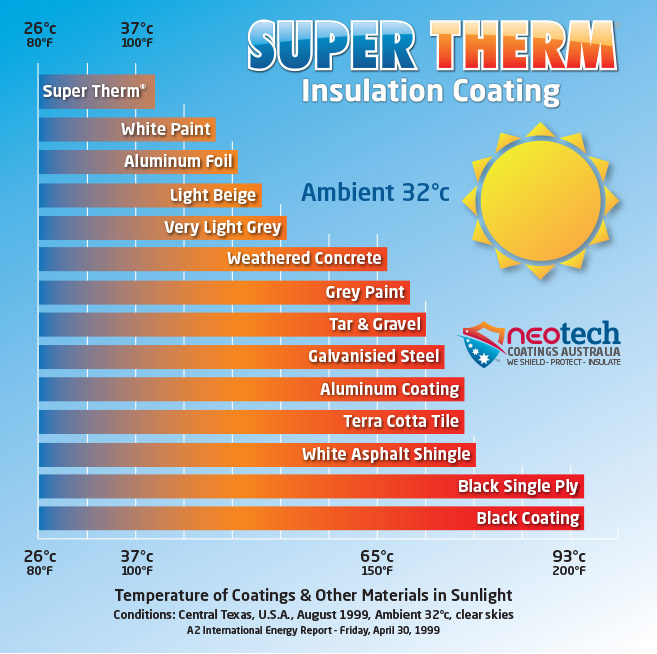
Super Therm® is Energy Star qualified as a 20 year roof coating.
In the USA, about $40 billion annually to air condition buildings – sixth of all electricity generated in the country.
Visit Energy Star website (Roofing) (USA)
Metal roofs have long been popular with architects for their dramatic appearance and long-term performance characteristics, particularly their low maintenance costs and durability. With the concept of sustainability now being widely embraced by the architectural community, metal roofs are being seen in a new light.
Metal roofing can contribute significantly to the sustainable building movement. Their high recycled content, total recyclability and energy efficiency allow “cool metal roofs” to qualify for points in the Energy Star and Leadership in Energy and Environmental Design (LEED) Green Building Rating System programs. More
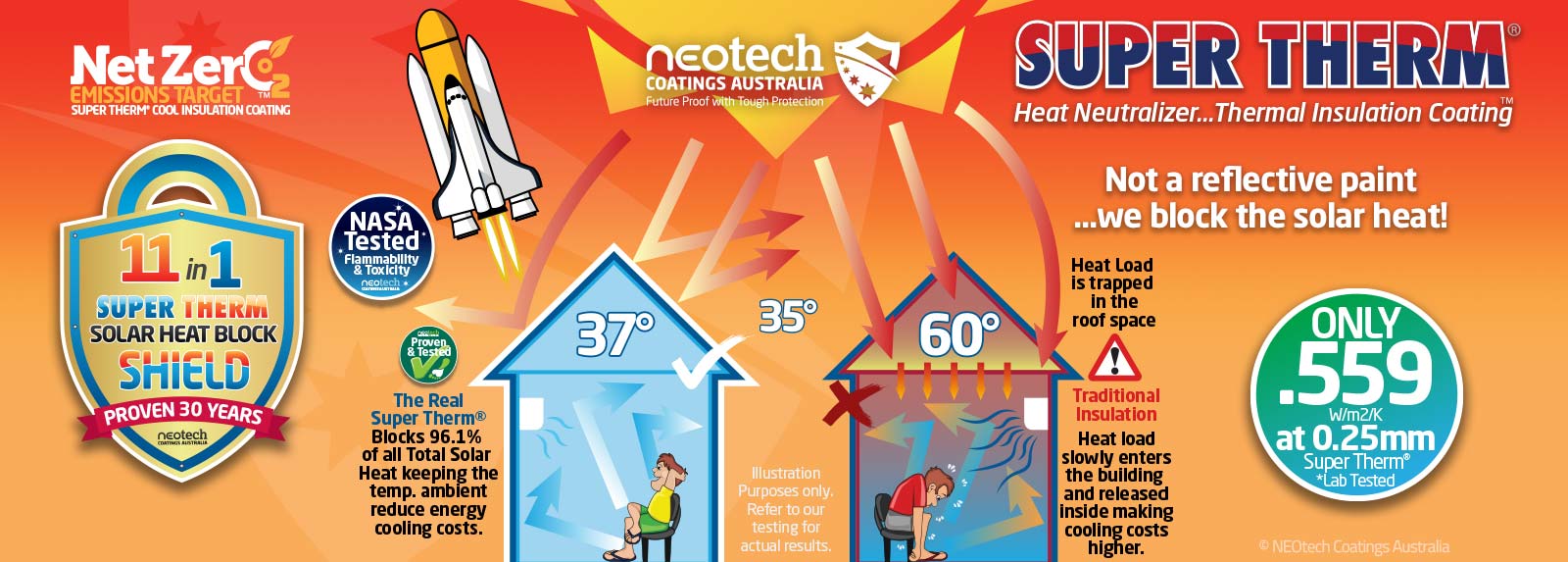
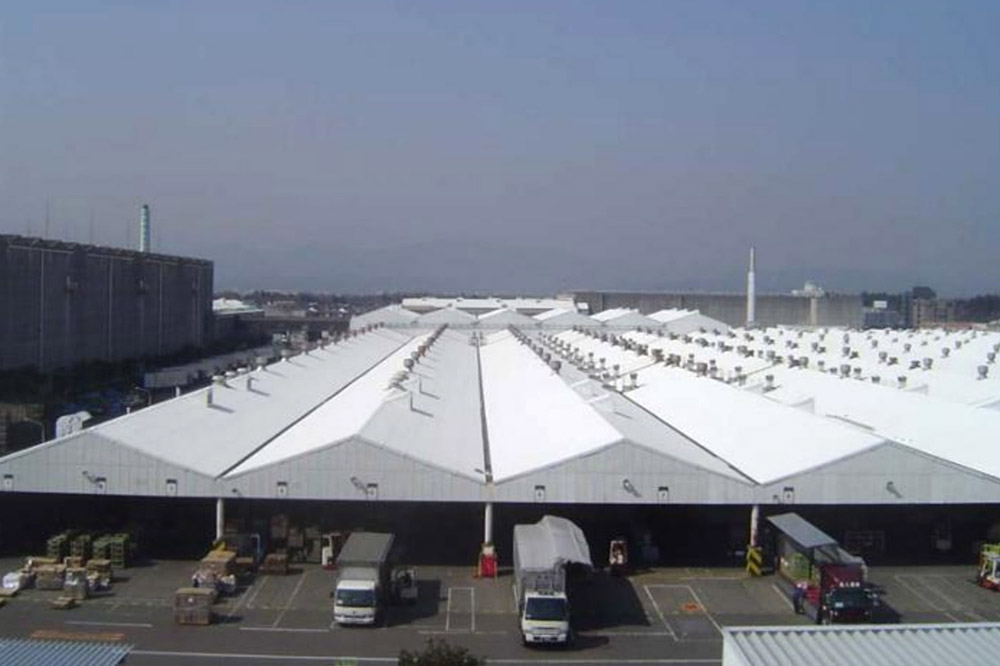 Reflecting 95% of the (99% UV, 92% Visual Light and 99.5% Infra Red) means that heat from that light is prevented from entering the building, the level of comfort is therefore ambient and not radiant based. This heat load prevention on roofs and walls greatly reduces temperature and therefore electricity bill savings through reduced KW power use.
Reflecting 95% of the (99% UV, 92% Visual Light and 99.5% Infra Red) means that heat from that light is prevented from entering the building, the level of comfort is therefore ambient and not radiant based. This heat load prevention on roofs and walls greatly reduces temperature and therefore electricity bill savings through reduced KW power use.
There are minimal demands on heating and cooling systems which will cost businesses more over time. A 6° reduction in the thermostat produces a 39% reduction in utility costs Con Edison.
Employee working conditions are greatly improved. Large warehouses and trucking firms have benefited where they need to improve employee conditions by lowering heat means less employee heat stress related illnesses, sick leave, workers compensation claims and turnover costs. This also works for animals in agriculture.
Due to this unique insulation property, you can maintain the interior temperature in a building at the human comfort level all year round reducing the need of traditional insulation material such as fibreglass. However Super Therm® with fibreglass insulation is a powerful combination. This, in turn, will cut down the energy costs associated with heating and air-conditioning drastically. This benefit is more pronounced with old buildings, especially those which do not have space or structure to allow room for fibreglass insulation. After applying Super Therm®, some old buildings have seen their electric consumption cut down by almost 80%.
Super Therm® has been thoroughly tested and proven and is used by many corporations and applied to millions of m2 around the world since it was first introduced in 1989. It has continued its long lasting proven success for over 30 years and the benefits, environmental rewards and sustainable results are unmatched.
Looking to join one of the world’s leading coatings companies. Contact us if you’re a quality applicator looking for new products and markets!